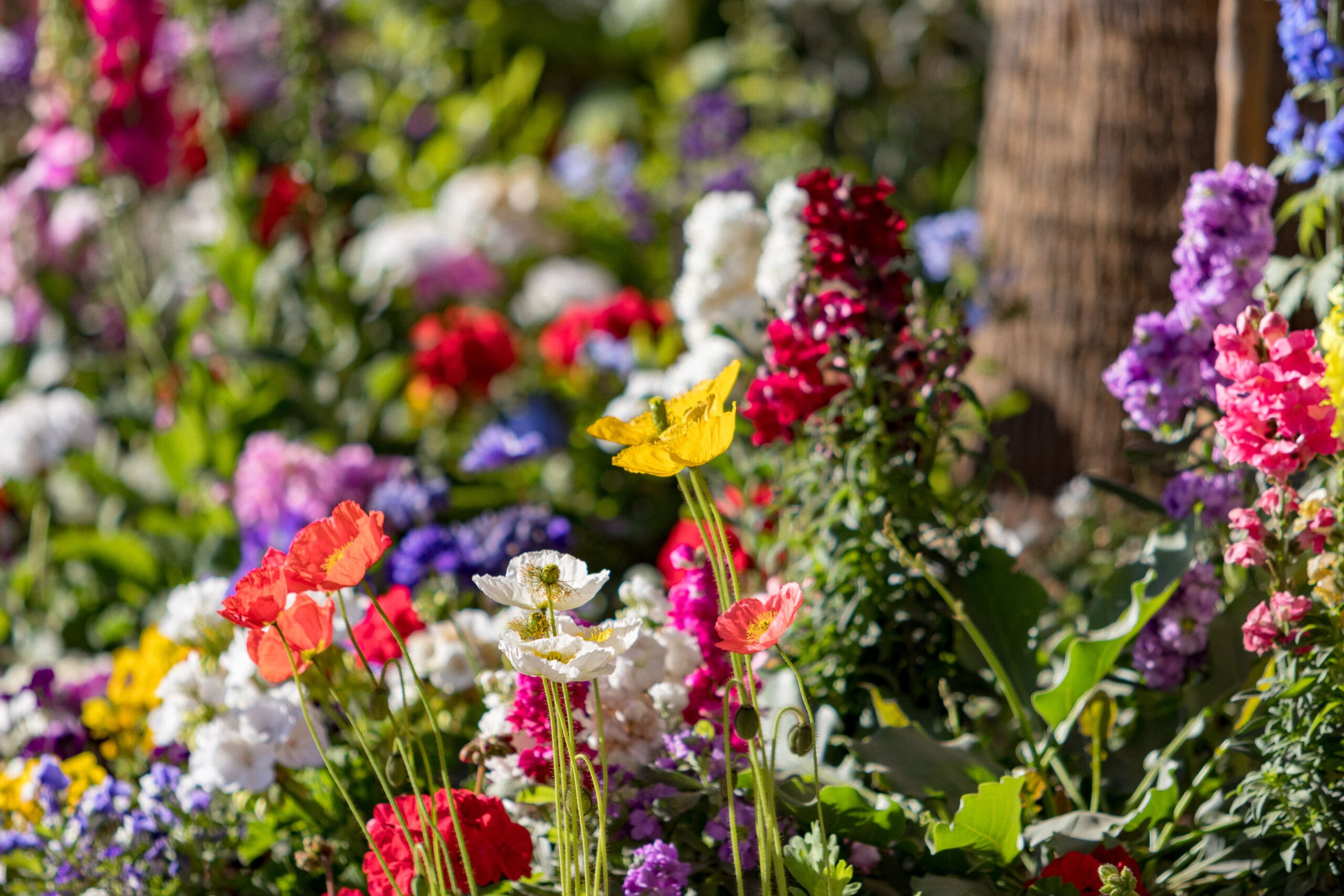
Chaos gardening is the latest gardening trend to go viral on TikTok and it resembles traditional English gardens or wildflower meadows. If your customers want to be successful with this style of gardening, there is a little more rhyme and reason to it than the name implies.
The term ‘chaos gardening’ is simply a new name for an age-old practice of taking leftover seeds, throwing them in the soil and seeing what grows.
Chaos gardening can be a good offering to your clients who are looking to embrace their wild side and move away from a more structured landscape.
“It’s fun,” says Russell Taylor, president of the Humic Products Trade Association. “It’s exciting. It’s different. There’s a certain personality that’s going to embrace this. There’s a certain personality that’s going cringe and go, ‘Oh, I can’t have this.’ It’s for the adventurous, I think.”
Start With Soil
The first step to ensuring a chaos garden can occur is properly preparing your client’s soil.
“What you have to remember about soil is your soil organic matter is the backbone of soil health,” Taylor says. “It aids in water conservation and nutrient retention and supporting the soil rhizosphere and everything going on in the soil is rotating around soil organic matter. The number one thing any grower can do, whether chaos gardening or any new planting, is really look at your soil organic matter and plan for success.”
Just like you would before treating a customer’s lawn with fertilizer or other products, Taylor encourages conducting a soil test.
“If you actually change the phrase and said, ‘Okay, consider this. You’re asking a doctor what pills you should take. Should I just go grab some out of the cabinet or should we do some tests first?’” Taylor says. “It sounds laughable when you frame it in that mindset, but actually, it’s true. We don’t go taking random pills because somebody said this one’s great. It may be the completely wrong pill for you. The first step is to do some tests. See what you need and adjust from there.”
Taylor stresses looking at both soil fertility and soil health when soil testing. While the soil fertility will let you know what nutrients are present and what may be lacking, the soil health addresses the organic matter and pH levels. Improving the organic matter in the soil has multiple benefits.
“A 1% change in soil organic matter will conserve 30,000 more gallons of water per acre,” Taylor says. “Water isn’t nutrient void; that water holds nutrients.”
Tips for Success
While a homeowner doing this on their own is more than welcome to toss out some random seed packets and hope for the best – if they want a garden that will actually grow and thrive, advise them on selecting plants and flowers that have similar sun/shade and water requirements.
Discuss with your client what type of plants they’d like to see in their chaos garden – some may want to just focus on seeing what edible plants they can grow together, while others might want only annuals or a mixture of everything.
“That’s one of the points of caution for chaos gardening is what’s your level of commitment here,” Taylor says. “Are you going to throw out some perennial seeds that are going to be around for a while? Maybe you want to test the waters and just throw out some annuals and see how committed they are to it. You might be throwing up seeds you’ve committed to for a long time. Look at whether it’s an annual or perennial and gauge your level of commitment; maybe chaos isn’t for you.”
It’s also important to avoid using plants reseed quickly or have the Napoleonic compulsion to take over the yard. If your client truly wants to include these types of plants – a good middle ground is creating chaos containers for them instead.
“There are certain rules that everybody should take into account as some seeds and plants will reseed really well,” Taylor says. “Let’s say you had some type of vetch or mint or something like that. If left unchecked, those things can really take over. Reseeding themselves and really creeping out in the lawn and other areas where you don’t want them. I would say pay a little bit of attention to seed packets you grab.”
Once you’ve decided with your client what type of seeds they’d like to use, you can select areas to test out the chaos garden. Spots with plenty of sunlight or corners that they have struggled to fill in past can be good locations to add these patches of color and blooms.
Check with your customer’s local regulations as some may restrict where these type of wild landscapes can be grown. Certain municipalities have rules about fruits and vegetables being grown in front yards and HOAs can have other restrictions to plant heights and tidiness.
Chaos gardening may sound like an easy, maintenance-free style of landscaping, but even this trend still calls for thinning and weeding.
“You can’t just throw it out there and expect it all to succeed,” Taylor says. “Instead of having these nice, neat lines, you just throw it out there, and then you thin it down to the appropriate space needed for those plants.”
Lastly, make sure to set realistic expectations with your client when it comes to chaos gardening. Let Mother Nature take the lead and have fun experimenting and understand failure is part of the process. This approach is all about being surprised and delighted by the unknown.




